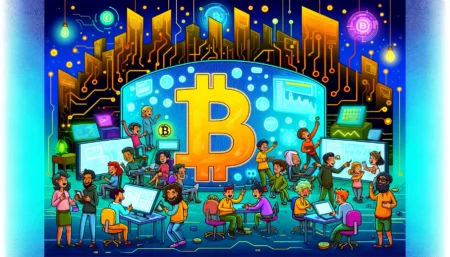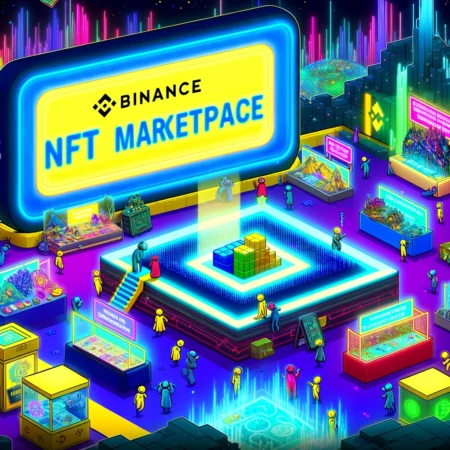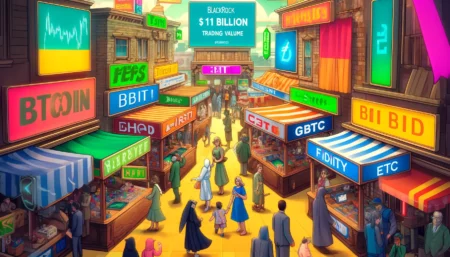Innovation in token design lags behind the larger ecosystem. Researchers have been focusing on scaling, smart contract optimization, and other more technical topics, while token design seems to be an afterthought. But founders are increasingly aware of its importance and are devoting significant resources to designing the token model. In this post, we’ll dive into three major trends in token issuance and provide some actionable guidance for early-stage teams.
In DeFi, token distribution is usually done through liquidity mining (LM) incentives and public sales. But that routine is changing and fast. TVL in DeFi has grown around 5x over the past year, traditional LM initiatives have fallen out of favor, and many newer projects are not just bootstrapping initial liquidity, but using tokens to gain long-term community membership. As liquidity increases, the protocol is able to be more selective and better engage long-term stakeholders.
Over the past year, three key developments in coin offerings have been tracked
- The token design process is more and more bottom-up, and more responsibility is shifted to the community.
- New innovations in auctions are helping founding teams launch tokens without an ICO or public sale.
- The network is experimenting with locking mechanisms for continuous issuance in an attempt to improve price volatility and exclude speculators.
Token offering design is becoming more community driven
From 2018, see hints of token design inclusivity to the project’s larger community. Early tokens of this era had some parameters that could be set by governance. Uniswap UNI -13.54%, for example, includes a fee switch for protocol revenue that can be turned on and set to different percentages through a voting process. This flexibility is proving to help future growth. For example, Yearn actually minted $200 million in additional tokens in early 2021. This design shifts more power to the project’s long-term stakeholders and the community of governance participants.
The process continues and the entire token distribution model is voted on by contributors. For example, Gro’s DAO-first approach is to launch the DAO before the token, which allows contributors to finalize its design and distribution. Interestingly, although the allocation is determined by the community, only 1% goes to airdrops, which is much lower than many protocols. In other words, the process did not attract speculators who wanted to distribute the tokens to themselves, but long-term stakeholders who supported the DAO and the protocol. Established protocols have taken a similar approach, most notably Yearn’s recent token economics changes, where the community proposed and modified a curve-like model.
This more inclusive and democratic process fosters a stronger stakeholder community that is more consistent with the long-term success of the protocol. It also introduces additional scrutiny on token distribution. Over the next year, we expect the responsibility for token distribution and design will shift from the founding team part to the community. While both will certainly play a key role, project contributors and governance participants will act as reviewers and a source of new ideas to ensure a more sustainable accumulation of token value. It is even possible to bring external parties into the design process. Communities like Fire Eyes or Token Engineering Commons (TEC) specialize in token economics and can propose designs that are voted on by the DAO for rewards.
Importantly, this process also allows DAO contributors to influence the long-term vision of the protocol, giving them more responsibility. Instead of feeling like passive supporters, community members gain a sense of ownership and accomplishment that further strengthens the community.
New auction format is helping teams launch tokens more successfully
Over the past year, a number of novel auction mechanisms have been used to assist in price discovery and enable fairer token distribution. Many of the tokens in the 2017-2018 ICO wave were snapped up by large whales capable of manipulating prices due to weak secondary market liquidity.
Given the chaos of that ICO era, a few new auction types emerged last year. Liquidity Bootstrapping Pools (LBPs) auction tokens over a set time period based on demand. The price is initially set to drop at a given rate, but if the coin sees high demand, the price will rise. LBP is designed to capture every investor’s willingness to pay and prevent whales from acquiring tokens in large numbers, as doing so would lead to price spikes. (Tokens can also only be purchased in small quantities). However, LBP also struggles to attract a wide range of stakeholders, as inexperienced investors are less willing to take on complex price risk during this time.
Tokemak’s Degenesis attempts to correct this flaw by making all investors pay the same price at the end of the auction. The campaign sets an initial price range that will be decided within a few days. Investors can withdraw their funds if they feel the price is too high, and tokens will not be distributed until the final price is determined at the end of the campaign, everyone pays the same price. There is no guesswork in price action, encouraging wider investor participation. However, the campaign may raise less money than a potential LBP, as some investors may be willing to buy the token at a higher price.
Recently, Locke Protocol introduced streaming auctions to distribute tokens. This mechanism distributes tokens to stakers for a set period of time, and participants can enter or exit the auction as the price moves. When there is a net inflow of staking tokens, the price goes up, and when there is a net outflow, the price goes down. The ability to move in and out with price changes provides a more user-friendly experience for less experienced participants and prevents whales from buying tokens in bulk due to price increases.
Unlike traditional ICOs, these more innovative mechanisms can improve price stability through fairer initial token distribution. They cleverly use programmability (a feature that TradFi products don’t have) to distribute tokens in a way that makes it difficult for speculative whales to pump and dump tokens, while providing a better experience for smaller players.
Over the next year, we expect these auctions and new mechanisms to become the standard for initial token distribution in DeFi. Using the bottom-up process detailed above, teams can propose auctions to the community through forum discussions and customize models to meet the different goals of each protocol.
Attempts to stabilize prices and attract long-term stakeholders by locking in
Over the last year, many protocols have attempted to change the lock-in of the secondary market structure of their native tokens by reducing circulating supply. The purpose of these locks is to force participants to align with the long-term success of the protocol (or at least until the lock ends).
OlympusDAO pioneered the concept of protocol owned liquidity (POL) through the bonding mechanism. Users will deposit stables or blue chips and receive OHM a few days later at a discounted price. This mechanism is similar to a discounted zero-coupon bond, so not similar to a lock, but very similar. Olympus also famously offers seemingly impossibly high APY to incentivize holders to stake their tokens, thereby reducing circulating supply. The OHM is then deposited into the DEX’s liquidity pool in pairs with the bound assets, allowing the protocol to own its liquidity. The mechanism worked well during bull markets, but also proved disastrous under harsh market conditions where investors were reluctant to accept price and market risk during bonds. Token prices plummeted as OHM was foreclosed and sold. The model’s popularity rapidly declined.
Released in mid-2020, Curve introduced voting escrow (ve) contracts, and ve tokenomics has become one of the most popular frameworks in DeFi. This model allows CRV holders to lock tokens for different time periods, with longer lock times resulting in higher reward boosts (multipliers). veCRV holders also vote on the metering weights that determine CRV releases to Curve LP, which leads to curve wars, where other protocols bribe veCRV holders to direct reward releases into their pools. Many other protocols are adopting ve tokenomics, including projects like Ribbon and Balancer. While still young, the model appears to limit volatility.
Other locking mechanisms have also become more common over the past year. Gro introduces a token vesting program for issuance, where holders can increase their GRO rewards by extending the vesting period. Locks can also be applied to initial allocations. For example, airdrops.
People have mixed opinions on lockdown. Proponents argue that they reduce short-term volatility and reward long-term holders, while discouraging speculative high-frequency traders from claiming large rewards. Conversely, critics argue that retail investors are reluctant to accept lock-in due to financial constraints and less experience underwriting market risks. They sometimes put artificial upward pressure on prices in bull markets and pull back sharply when they exit in bear markets. Still, projects can consider lock-in broadly, as long as they also understand the specific shortcomings and limitations of the model being implemented, particularly the types of people who are attracted or discouraged from participating.
Epilogue
The purpose of this paper is not to provide a copy-and-paste model for token issuance, but to provide a high-level overview of the experimental frontiers in the field. The growing popularity of ve tokenomics, Olympus-style PCA bonding, and other mechanisms has prompted a highly standardized landscape. As the field becomes more homogenized, it appears to have shifted broadly into competition for earnings, but this trend is unsustainable.
Conversely, early-stage projects can consider bottom-up token design, new auction mechanisms, and locking as a means of cultivating long-term stakeholder communities through token issuance. Broadly speaking, innovation in token design lags behind the larger ecosystem. Researchers have been focusing on scaling, smart contract optimization, and other more technical topics, while token design seems to be an afterthought. But founders are increasingly aware of its importance and are devoting significant resources to designing the token model.






